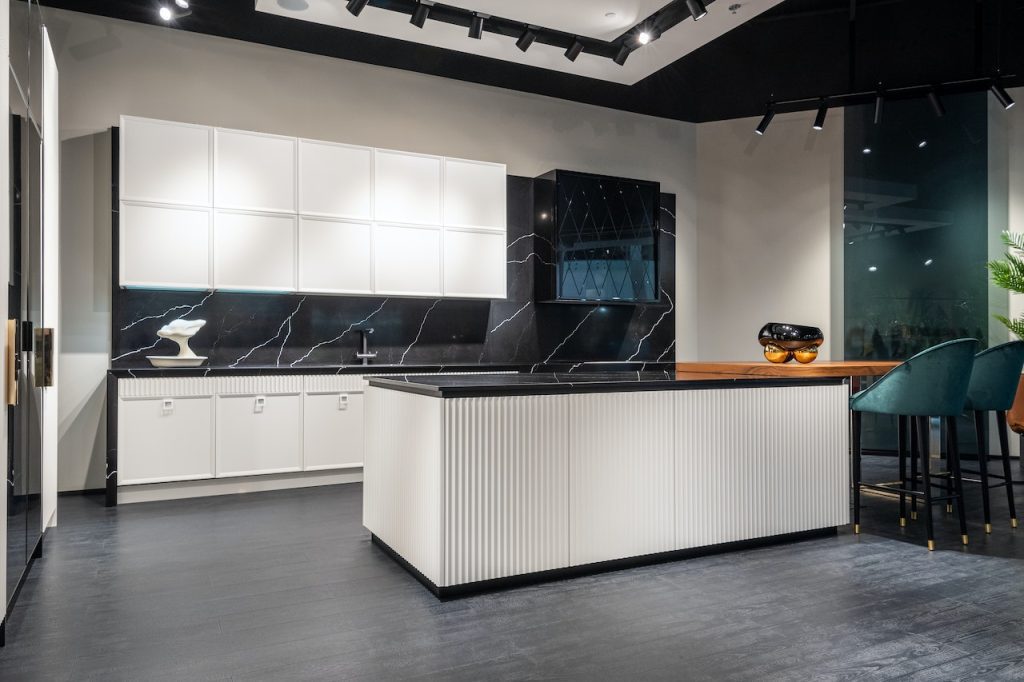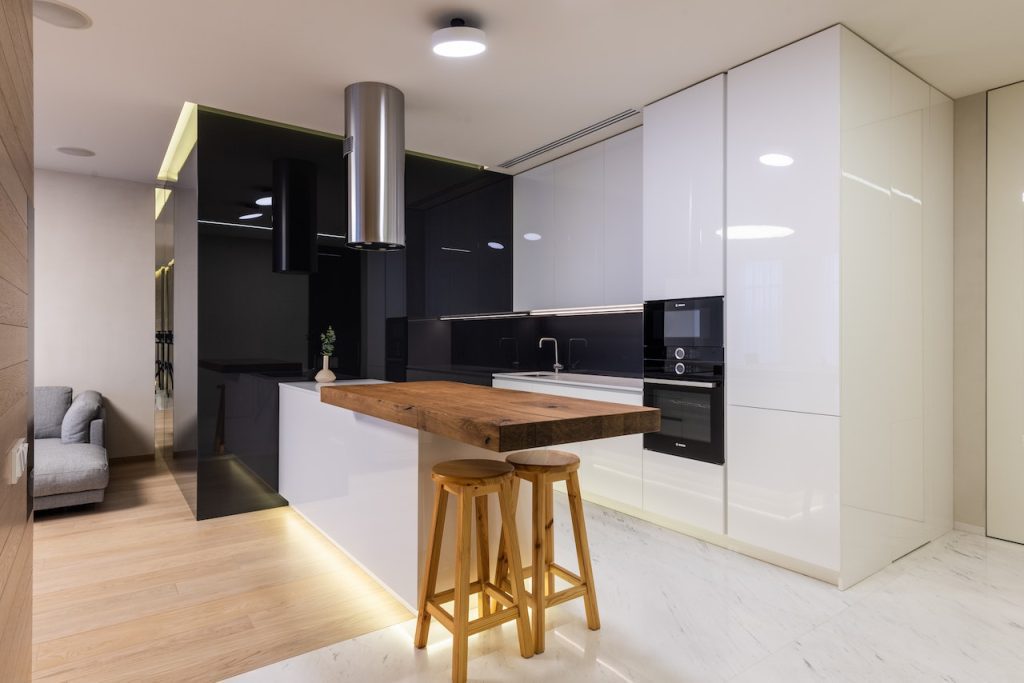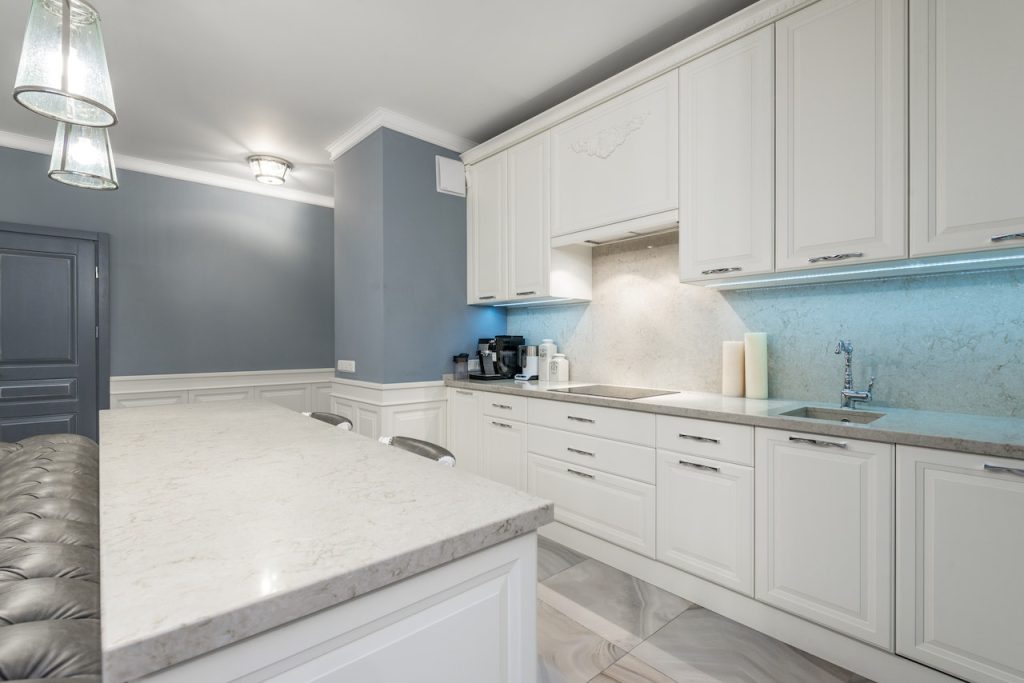If you’re interested in a Mid-Century Modern kitchen design, you’ve come to the right place. This look incorporates everything from wood paneling to metal cabinets. It also features a variety of materials, including ceramic tile and quartz countertops. Read on to learn more about the design style and what to consider when deciding which materials and finishes to use.
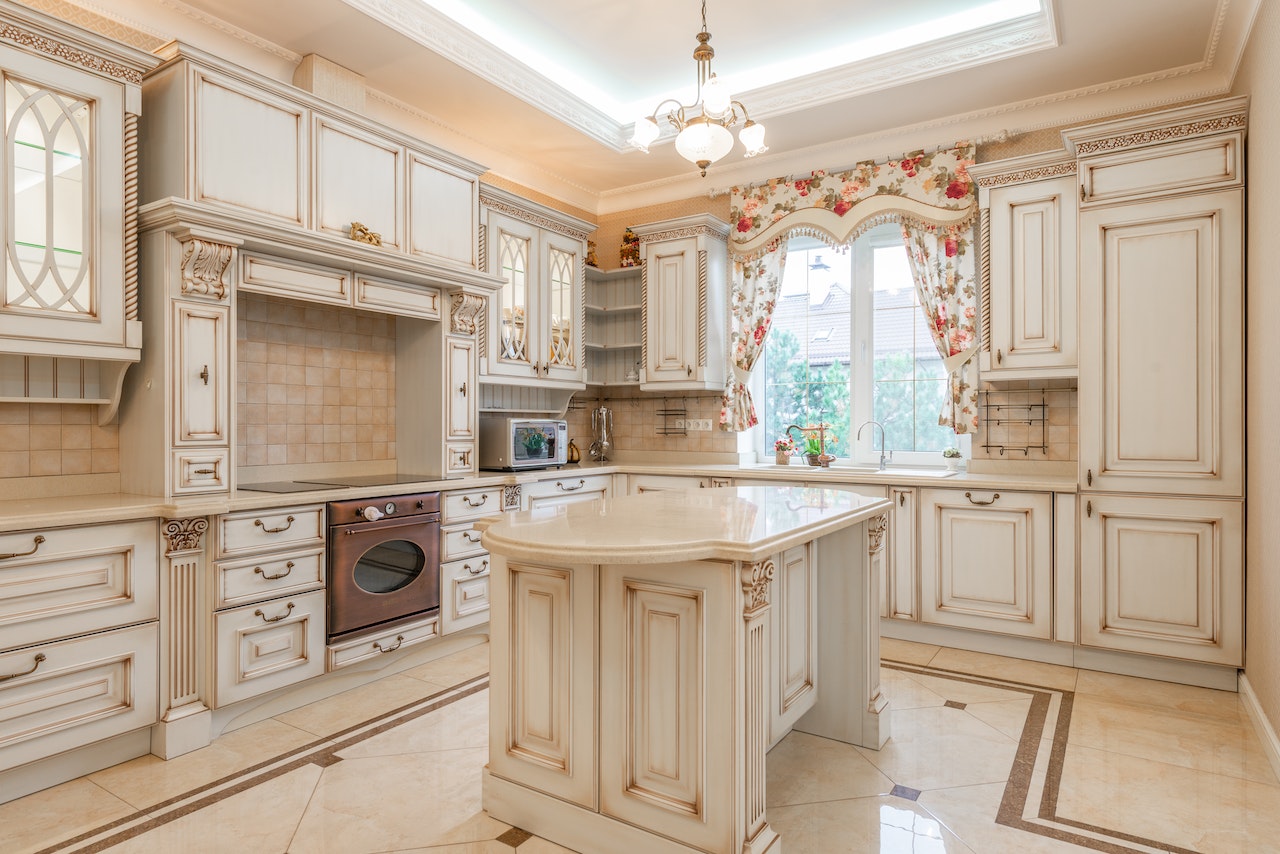
Metal cabinets
When you’re looking for kitchen design ideas, you might be wondering whether you should choose a contemporary design or go for the Mid-Century Modern style. While these two styles are largely the same, there are some surprising differences. In the 1960s, wood cabinets were the dominant material for kitchens, and by the 1970s, laminate countertops were all the rage. Today, laminate is available in a variety of colors and patterns.
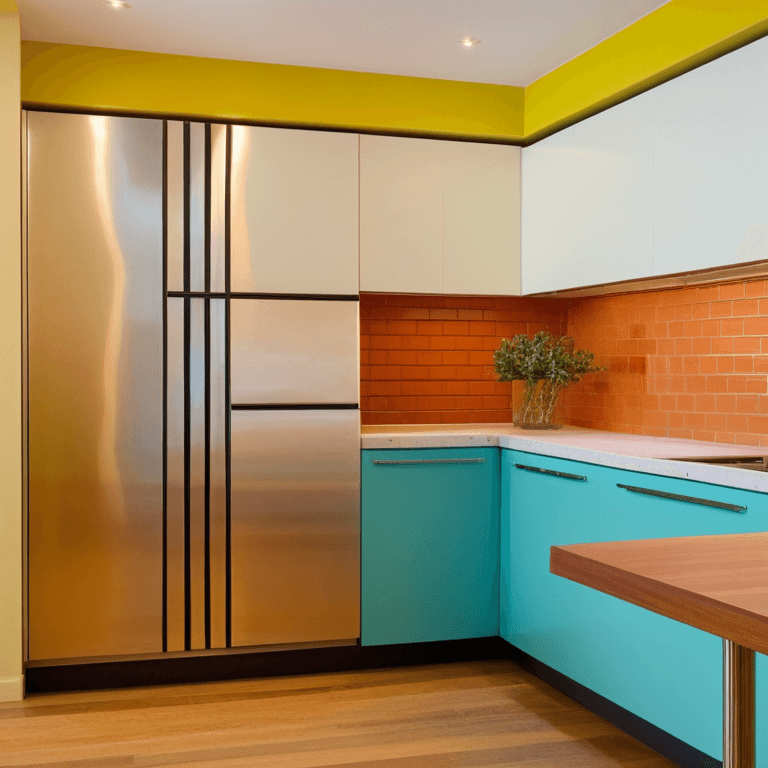
A Mid-Century Modern kitchen with steel cabinets has a distinctive look. It was first adopted by architects such as Frank Lloyd Wright, who chose to incorporate them into his designs. In the early 1930s, steel cabinets were reserved for high-end homes and were often streamlined and “deco.” Typically ice gray and white, these cabinets were considered modern and ideal for the discerning client.
To achieve a mid-century modern kitchen, choose a color scheme that complements the cabinets. A classic red and white color scheme would look great with metal cabinets. However, if you’re looking for a more modern feel, consider a color scheme that incorporates bold colors such as green or yellow. You’ll want to contrast these bold colors with wood floors and a muted backsplash.
Wood paneling
If you’re looking for a modern twist on a traditional kitchen, wood paneling can be an excellent option. Not only does it look warm and cozy, but it’s also a cheaper alternative to drywall. You can also add a backsplash, which is easy to do and will add a touch of elegance. Plus, you can install sliding patio doors, which will seamlessly connect your kitchen to the outdoors.
Wood paneling is often associated with a cabin, but it’s also popular in mid-century modern design. This traditional style of wood paneling was reworked by mid-century modern designers to make an impact in the kitchen. Deep-colored panels will complement the warm colors of mid-century modern decor.
Mid-century modernists incorporated a lot of natural materials in their designs. They wanted to give homeowners a feeling of being outdoors. Wood paneling was an important element in these designs, and it was always polished to bring out its grain. It was a way to express the beauty of good materials.
Ceramic tile
Ceramic tile is an attractive addition to any mid-century modern kitchen. These tiles can come in a range of colors, designs, and patterns. They are also functional, ensuring continuity of style throughout the space. They are an excellent option for replacing the utilitarian look of linoleum floors.
You should choose tiles with clean lines and a simple, streamlined look. The tiles should never be too busy or distracting in a mid-century modern kitchen. If you are unsure about how to install them, you can consult an expert. Eichler owner Lucile Glessner has some helpful tips.
The mid-century aesthetic is a style that combines clean lines with colorful accents. Mid-century modern kitchens usually feature a colorful backsplash. To modernize the look, apply a black tile border around the colorful tile. Geometric shapes such as squares and rectangles are popular, but there are also graphic patterns that add an extra pop of color.
When selecting a tile color palette for your mid-century modern kitchen, keep in mind the preferences of the homeowner. Neutral colors will always look good, but you can also use warm or bold colors to create a modern look. Bright colors will contrast the heavy wood grain in a mid-century modern kitchen.
Quartz
The kitchen is the central hub of the home. It has evolved from a simple utilitarian space to a multifunctional space. Mid-century modern kitchen designs aim to blend functional necessity with personal prerequisites. A kitchen that incorporates quartz countertops can be the perfect representation of the 1950s or 1960s design. Here’s how to create a perfect kitchen in this period. We can borrow inspiration from the famous work triangle concept.
A mid-century modern kitchen with quartz countertops and white oak cabinets can create a stylish setting that works with modern decor. This kitchen’s crisp white quartz countertop contrasts with the warm wood flooring and white porcelain backsplash. To add visual interest to the backsplash and floor, use geometric tiles.
If you’re looking to create a stylish kitchen with quartz countertops, try incorporating bold colors. Bold colors pair well with mid-century modern kitchen cabinets, while subtle color combinations work well with a mid-century modern quartz countertop. One of the best examples of a bold color combination is the 5810 Black Temple by Caesarstone. You can also include vintage elements in your design to create the perfect balance.
Vintage style accessories
To create a mid-century kitchen, look for stylish accessories that have a retro feel. For instance, an adjustable height stove and a vintage-inspired warehouse-style lighting fixture can add mid-century charm to a kitchen. A retro pastel backsplash can also bring a kitchen back in time. Susan Jablon Mosaics are a great choice for a midcentury modern kitchen refresh. A prized flea market finds like this set of vintage canisters may also add to the retro feel.
Mid-Century Modern kitchen accessories are typically inexpensive, so you can purchase them without breaking the bank. However, if you are willing to spend more, you can choose authentic vintage textiles. These fabrics are often small in yardage and have abstract patterns. To balance out the richer colors of mid-century modern kitchen accessories, use neutral tones. The vintage-style fabrics are typically made of high-quality materials, which makes them more durable than modern materials.
Mid-Century Modern kitchens often feature metallic design accents. Metallic colors and materials add an extra layer of glamour to the space. In this house, Los Angeles-based designers Joy Cho and Cleo Murnane incorporated elements from their neighborhood into their mid-century modern design. The kitchen features a brass-inlaid backsplash from Tabarka and glitzy Mitzi lighting.
Muted tones with vibrant pops of color
The mid-century style blurs the lines between indoor and outdoor living areas with the use of expansive expanses of glass and open floor plans. Despite the neutral colors used throughout, the mid-century kitchen still offers a strong connection to nature. Massive floor-to-ceiling window walls, as well as a pair of picture windows flanking the cooktop, add a sense of comfort and natural light to this room.
While the mid-century modern style is generally considered to be modern and minimalist, muted tones are still a great way to give your kitchen a retro feel. To add interest, consider mixing muted tones with vibrant pops of color.
Mid-century modern kitchens can incorporate a variety of colors, including bolder accents and contrasting materials. For instance, blue cabinetry with a bold red floor runner will add some lively color to a modest space. In addition to pairing muted tones with vibrant pops of color, a mid-century modern kitchen can have a monochrome color scheme. Adding a splash of vibrant color to a monochrome space can be as easy as pairing blue and brass pieces.
If you want to go for a cooler tone, consider using Amazing Gray for the walls. This taupe color works well with both interior and exterior walls, as well as appliances and furnishings. Amazing Gray will also go well with other cool tones used throughout your home, such as white or gray.
Open shelving
Open shelving is a common design element in mid-century modern kitchens. It makes the space feel airy and spacious and allows the space to be divided into multiple zones. In this kitchen, open shelving is used to highlight the homeowner’s mid-century stoneware collection, while providing more storage space.
Open shelving can be a large feature of a mid-century modern kitchen, or it can be used as an accent. For instance, an open shelving section over the sink or at the end of the shelving unit adds a splash of color and visual appeal. In the same way, a kitchen with heavy wood furniture and heavy cabinetry can benefit from open shelving to break up the room.
Mid-century modern kitchens are also filled with bold pops of color. This can be in the form of neon cabinets, pastel appliances, or other decorative items. Open shelving can also be paired with other elements of the design, such as colorful backsplashes and accessories. Open shelving can also open space and make it feel airier, making it appear taller and lighter.
Open shelving is a modern option for mid-century modern kitchens, but there are a few things to keep in mind. In addition to being aesthetically pleasing, open shelving can provide a functional storage solution that can also double as a display area for retro kitchen appliances or dishware. You can even add plants or other decors on these shelves to bring the space to life.
